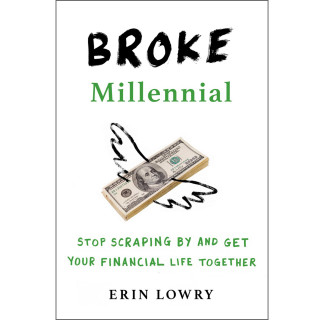How to Find Your Budgeting Personality
Erin Lowry, the author of Broke Millennial, shares three no-hassle ways to track how much you have coming in and going out each month.

Photo: Daniel Grizelj/Getty Images
There are myriad ways you can take control over your money, which is why it's imperative you select one that works not for your financial situation but also for your personality. Here are three different budgeting styles to consider if you're trying to feel empowered instead of overwhelmed.
1. The Cash Diet
The Cash Diet is really as simple as it sounds: you pay for everything in cash. Granted, it's the digital age, so I get that not everything can be paid for with actual dollar bills. If you need to buy a plane ticket or pay your bills, you'll probably have to do those online. But everything else must be paid for in cash.
Just the Basics: The Cash Diet
Here's an overview of how to successfully utilize a Cash Diet budget:Do weekly check-ins on your budget to assess how much you have left for the month.
Leave a $100 buffer, especially during your first attempt at a Cash Diet. Odds are that you will forget about a fixed expense that will hit halfway through the month. This buffer will help take care of that.
To prevent storing a bunch of money in your home—where it could be vulnerable to robbery, etc.—don't withdraw the entire month's amount all at once. Let the bank and FDIC insurance protect you and withdraw only the amount you can spend each week.
Any cash left can be rolled over to the next month, or you can really kick your financial skills up a notch and save the remainder.
2. The Tracking Every Penny System
The name says it all: you're going to record every financial transaction you make, down to the penny. You can customize this budget plan to suit your style of tracking expenses. For example, you can total your money spent at the end of each day or wait to crunch the numbers 'til the last day of the week. You might record your purchases by writing down each transaction (on your phone, of course; nobody does that pen-and-paper thing anymore). Or you may want to exclusively use one credit card for all purchases so you can just log into your account and make note of your daily or weekly transactions.
Just the Basics: The Tracking Every Penny System
Research various techniques for tracking every penny. Writing down purchases and matching them up against receipts may work for some, while others may prefer paying for elaborate budgeting software like You Need a Budget (YNAB.com) or utilizing free options like Mint.com.
This strategy is worthless without analyzing what you're spending your money on, so be sure to mark down what the purchase actually was and not just the cost.
Tracking your spending by the penny will enable you to properly audit your spending habits and find where you may have been unknowingly hemorrhaging cash.
Don't give up if you forget to track for a day.
3. The Envelope System
The Envelope System dictates how much you can spend in certain categories.
This can be done digitally or with physical envelopes. Personally, I find the latter to be more motivating, but again it is potentially problematic to keep that much cash stashed in your home.
Take some time to sit down and write out your financial responsibilities and priorities into categories that will become envelopes. Common envelopes include rent/mortgage, utilities, transportation, cell phone bill, student loans, other debts, food, pet and/or kid, emergency fund, retirement, and entertainment. Once the envelopes are defined, it's time to fund them. Determine how much money out of each paycheck should be going into your various funds. Do you get paid bi-weekly and your rent is $800? Then $400 of each paycheck goes into the rent envelope.
Just the Basics: The Envelope System
The Envelope System is similar to the Cash Diet, but with structure about how much you can spend in certain categories.
Each envelope is labeled for a specific part of your budget, such as rent, student loans, emergency fund, pets, etc.
Once you've spent all the money in an envelope, then you're tapped out for the month. No borrowing from one envelope to fund another.
It's possible to do the envelope system digitally, but you need to be on top of your game if you plan to segment all your money into various checking accounts or subcategories.
 Adapted from BROKE MILLENNIAL by Erin Lowry with the permission of TarcherPerigee, an imprint of Penguin Random House. Copyright © 2017 by Erin Lowry.
Adapted from BROKE MILLENNIAL by Erin Lowry with the permission of TarcherPerigee, an imprint of Penguin Random House. Copyright © 2017 by Erin Lowry.
Want more stories like this delivered to your inbox? Sign up for the Oprah.com Money Newsletter!
1. The Cash Diet
The Cash Diet is really as simple as it sounds: you pay for everything in cash. Granted, it's the digital age, so I get that not everything can be paid for with actual dollar bills. If you need to buy a plane ticket or pay your bills, you'll probably have to do those online. But everything else must be paid for in cash.
Just the Basics: The Cash Diet
Here's an overview of how to successfully utilize a Cash Diet budget:
2. The Tracking Every Penny System
The name says it all: you're going to record every financial transaction you make, down to the penny. You can customize this budget plan to suit your style of tracking expenses. For example, you can total your money spent at the end of each day or wait to crunch the numbers 'til the last day of the week. You might record your purchases by writing down each transaction (on your phone, of course; nobody does that pen-and-paper thing anymore). Or you may want to exclusively use one credit card for all purchases so you can just log into your account and make note of your daily or weekly transactions.
Just the Basics: The Tracking Every Penny System
3. The Envelope System
The Envelope System dictates how much you can spend in certain categories.
This can be done digitally or with physical envelopes. Personally, I find the latter to be more motivating, but again it is potentially problematic to keep that much cash stashed in your home.
Take some time to sit down and write out your financial responsibilities and priorities into categories that will become envelopes. Common envelopes include rent/mortgage, utilities, transportation, cell phone bill, student loans, other debts, food, pet and/or kid, emergency fund, retirement, and entertainment. Once the envelopes are defined, it's time to fund them. Determine how much money out of each paycheck should be going into your various funds. Do you get paid bi-weekly and your rent is $800? Then $400 of each paycheck goes into the rent envelope.
Just the Basics: The Envelope System
 Adapted from BROKE MILLENNIAL by Erin Lowry with the permission of TarcherPerigee, an imprint of Penguin Random House. Copyright © 2017 by Erin Lowry.
Adapted from BROKE MILLENNIAL by Erin Lowry with the permission of TarcherPerigee, an imprint of Penguin Random House. Copyright © 2017 by Erin Lowry.
Want more stories like this delivered to your inbox? Sign up for the Oprah.com Money Newsletter!



